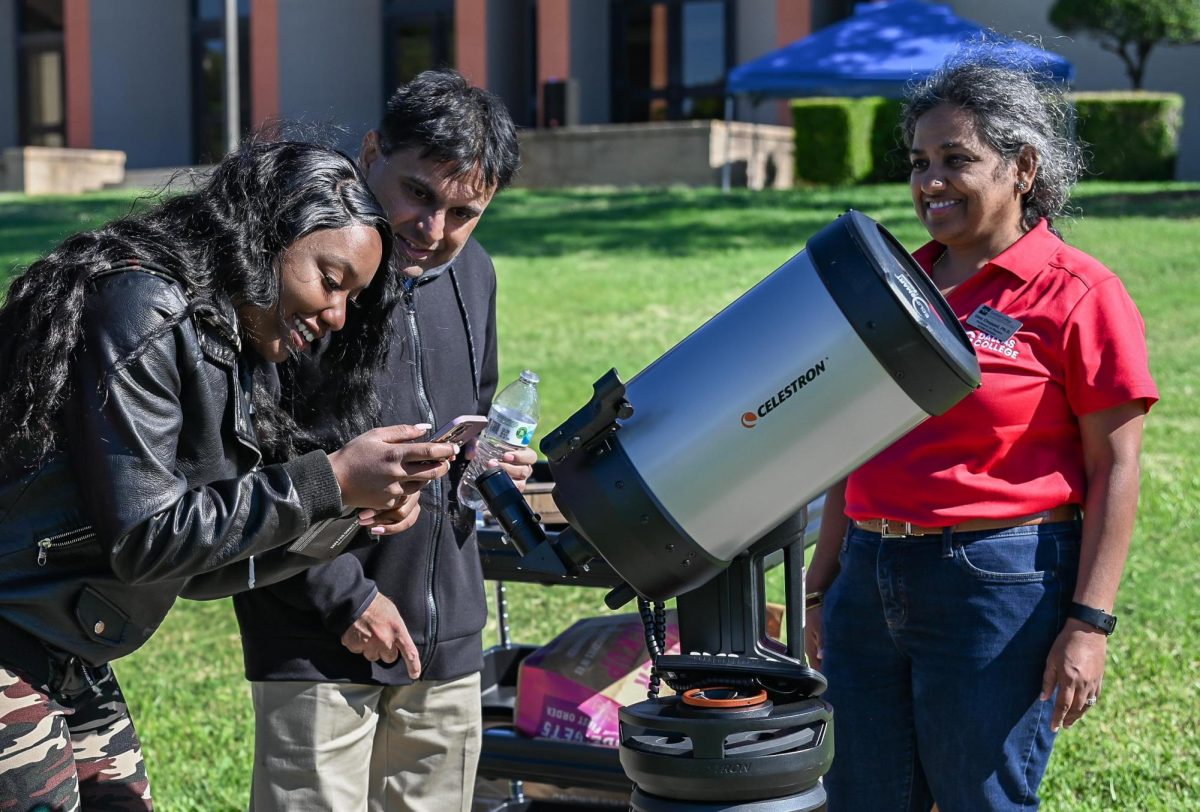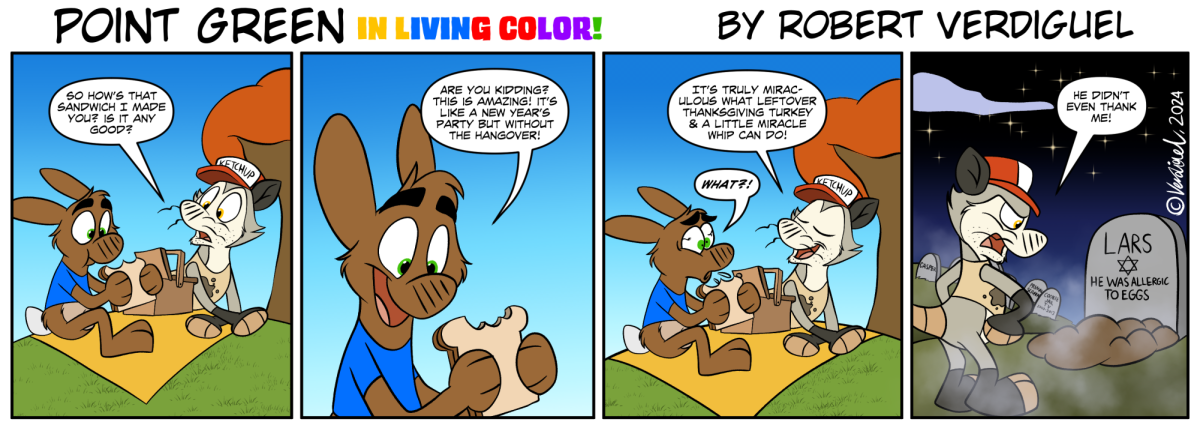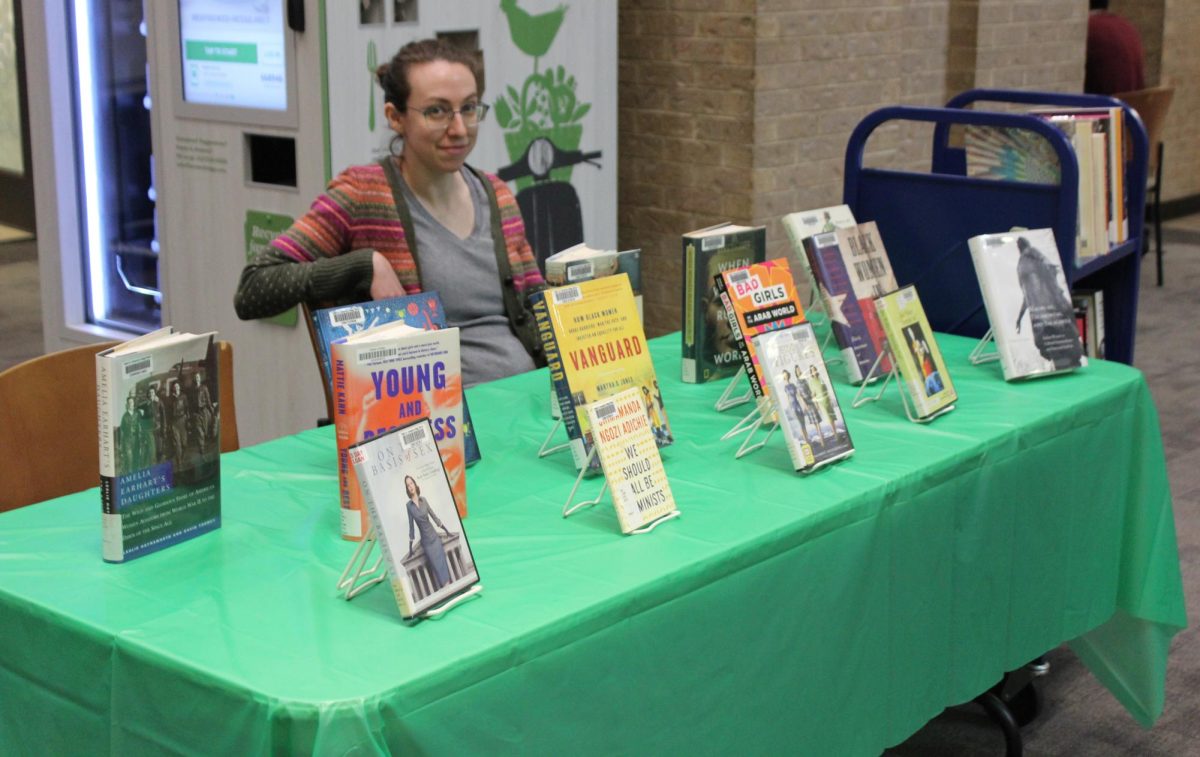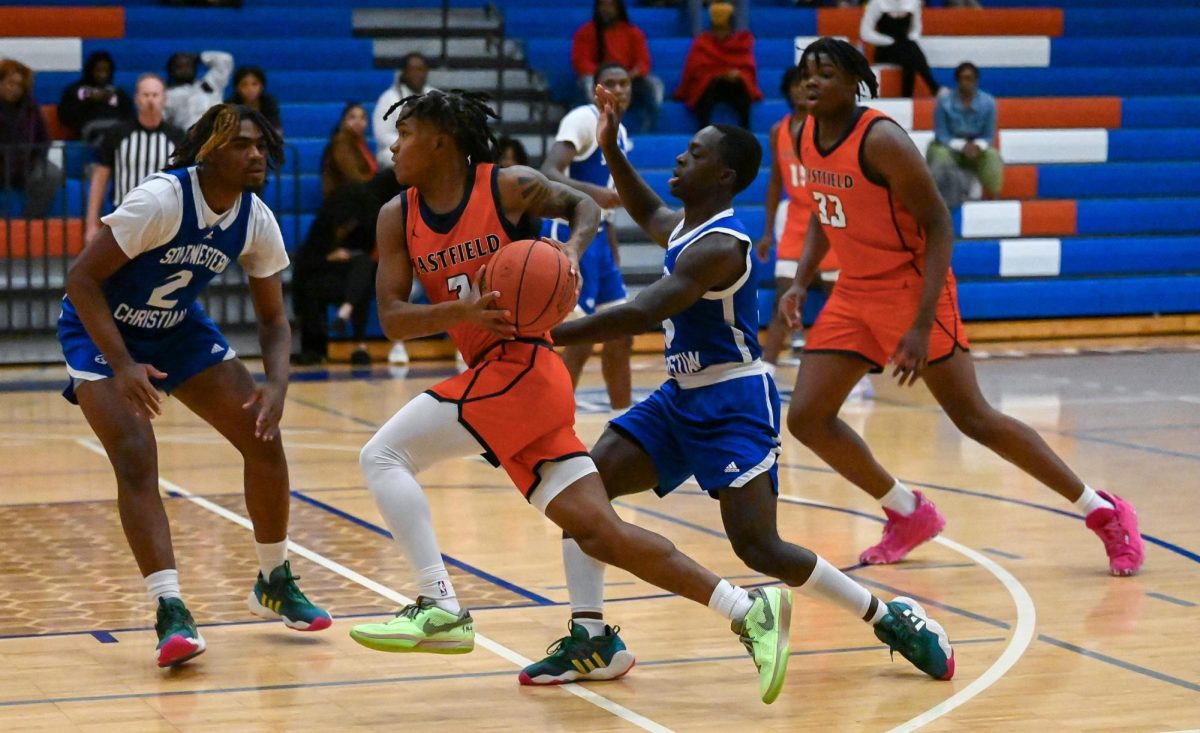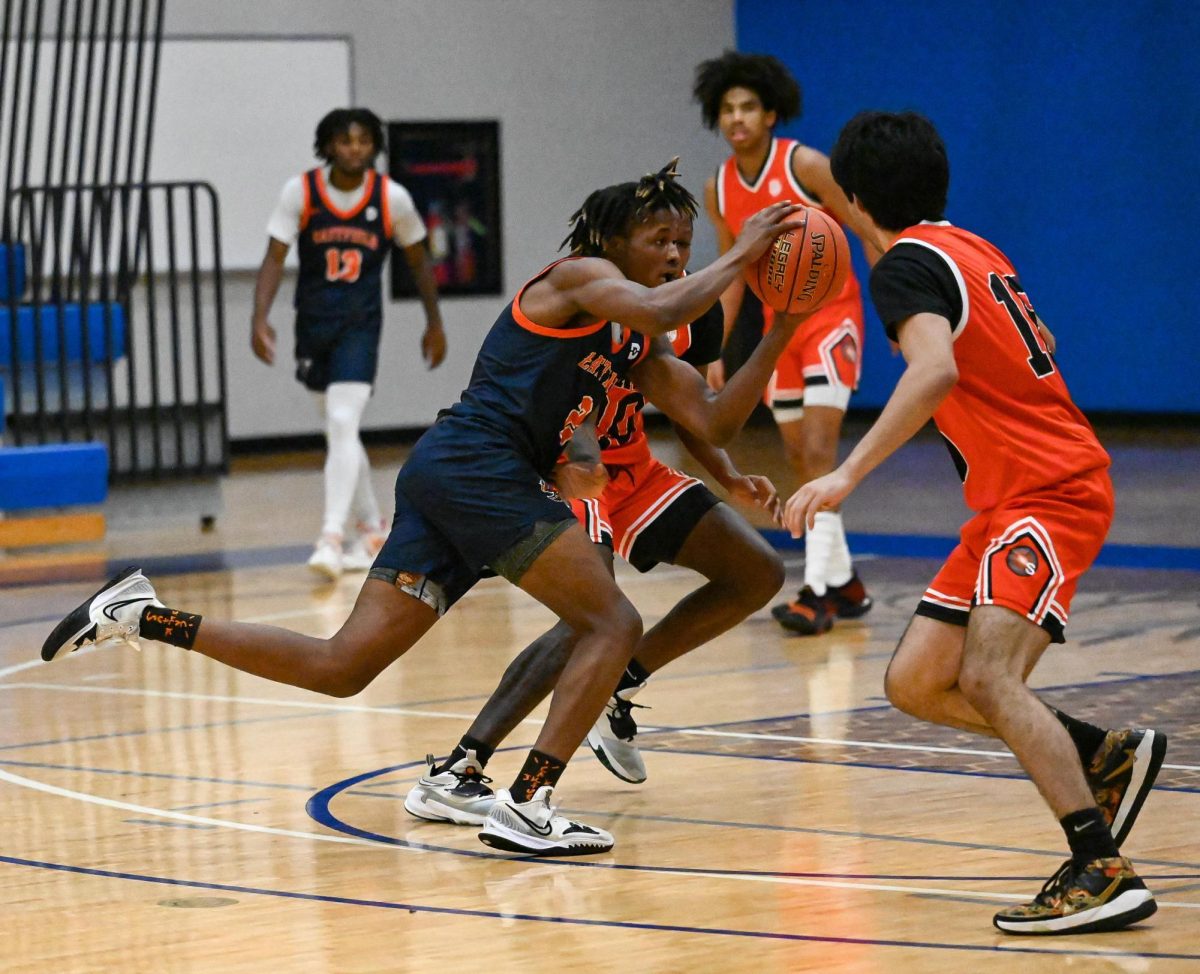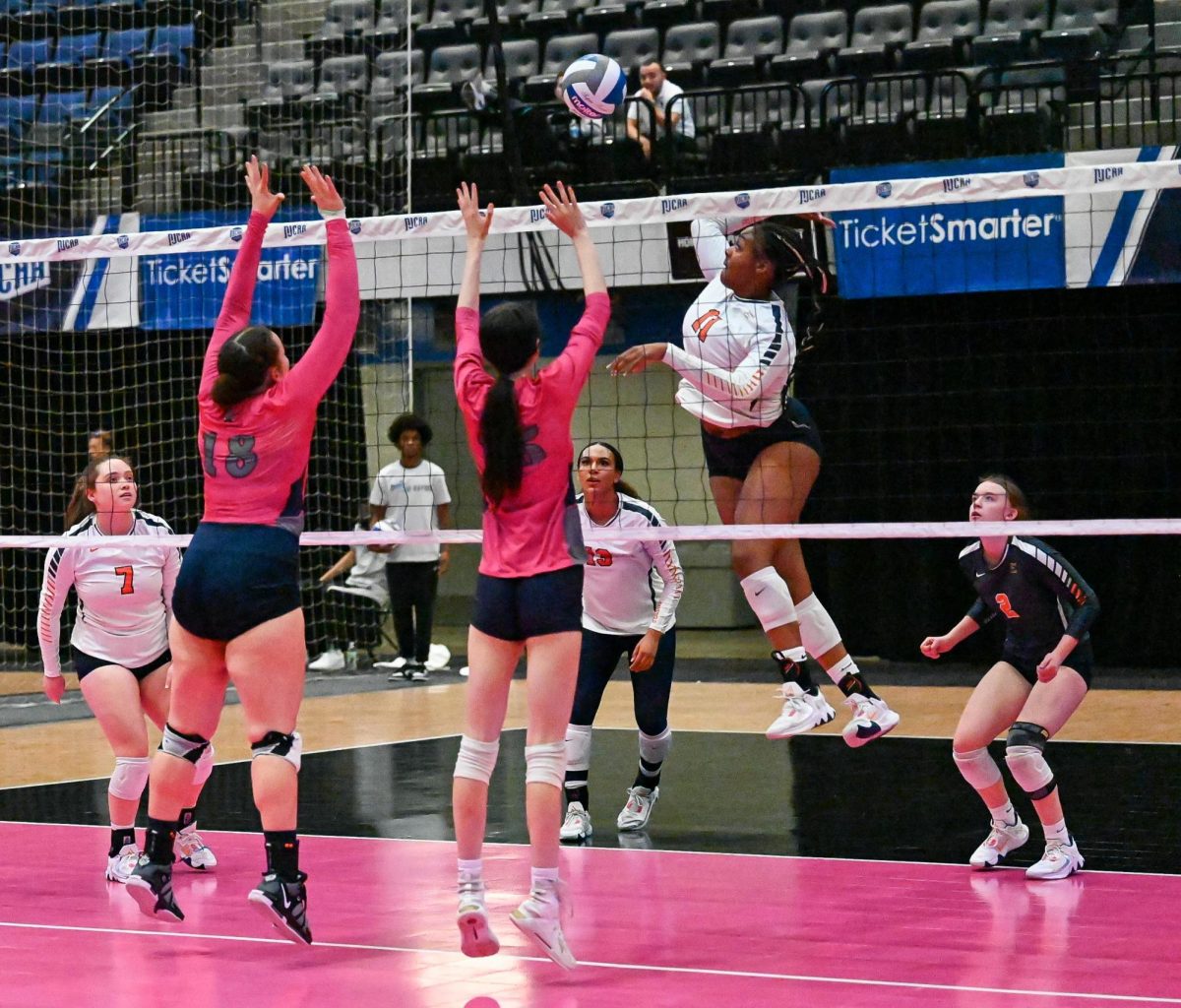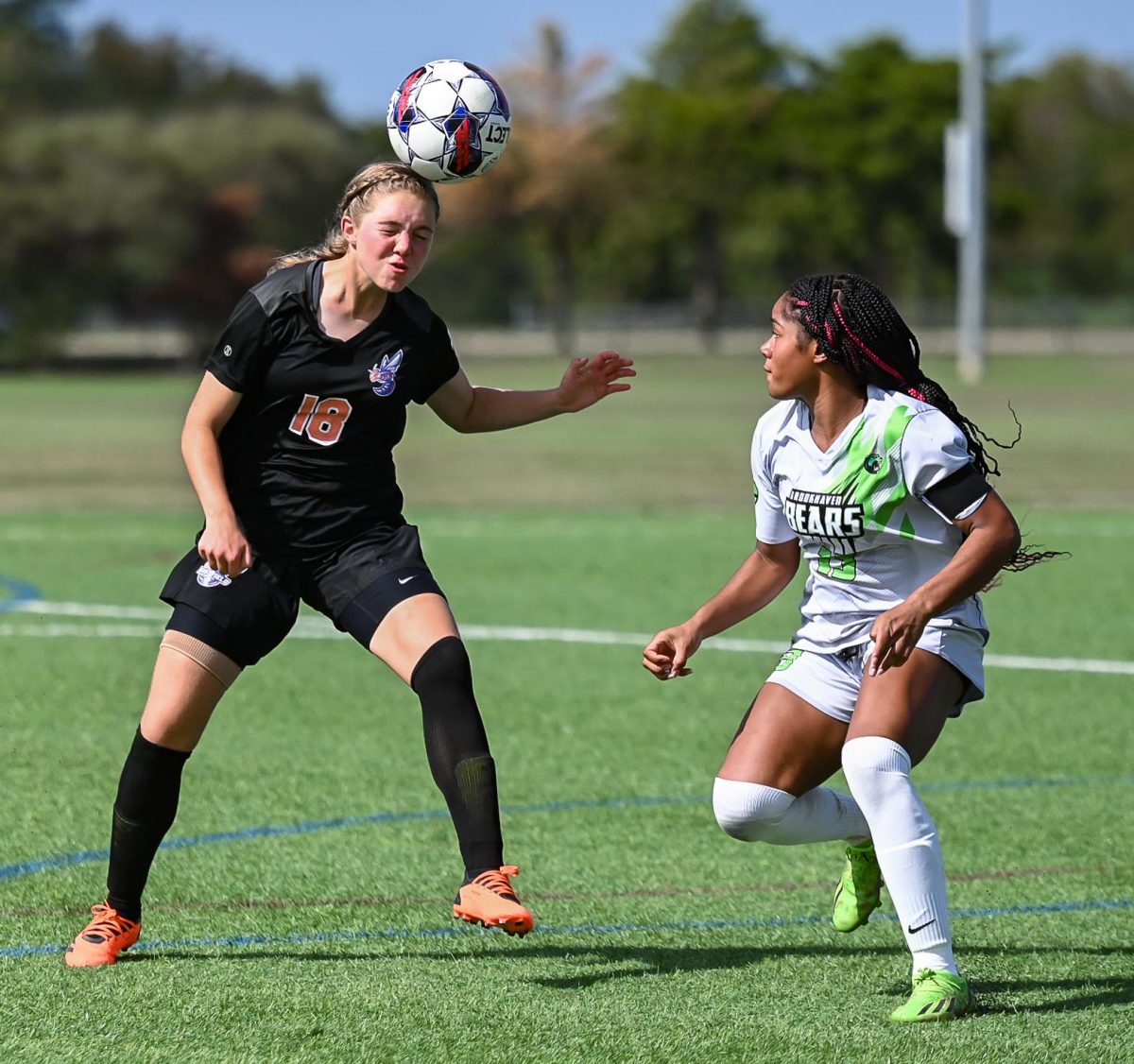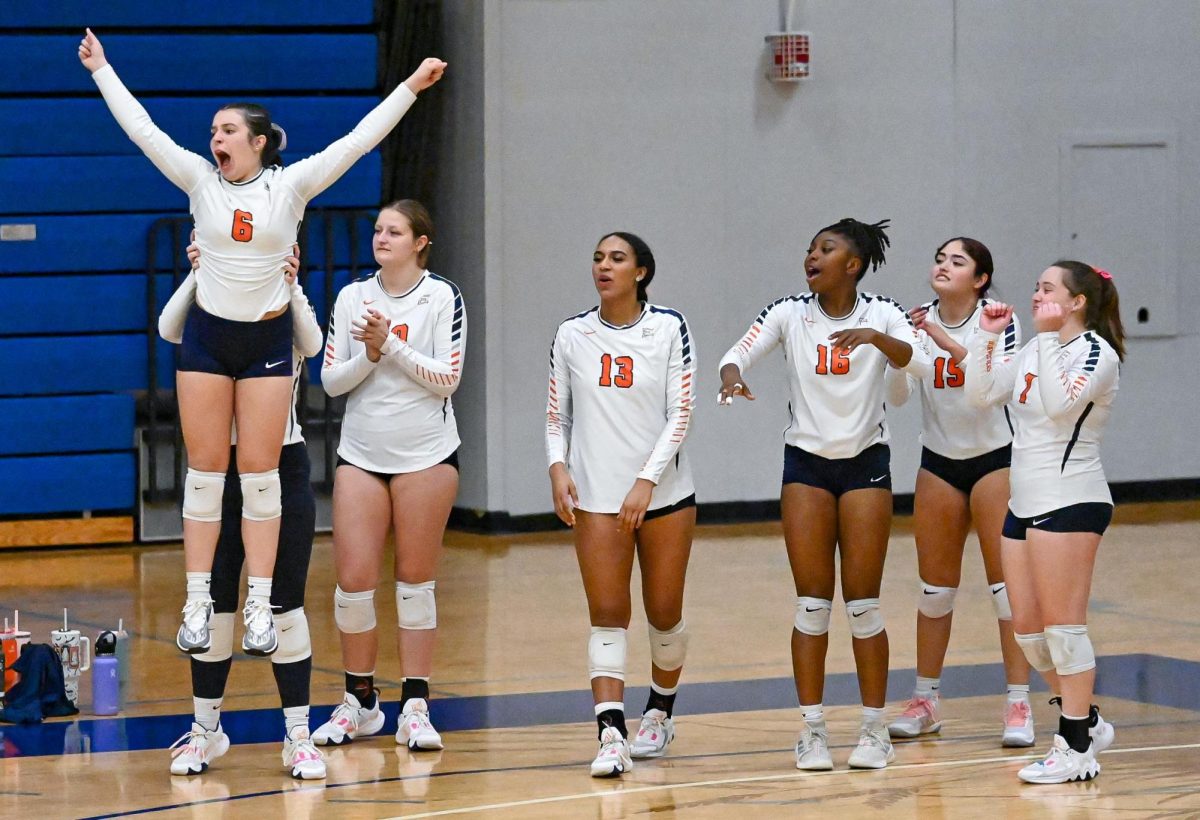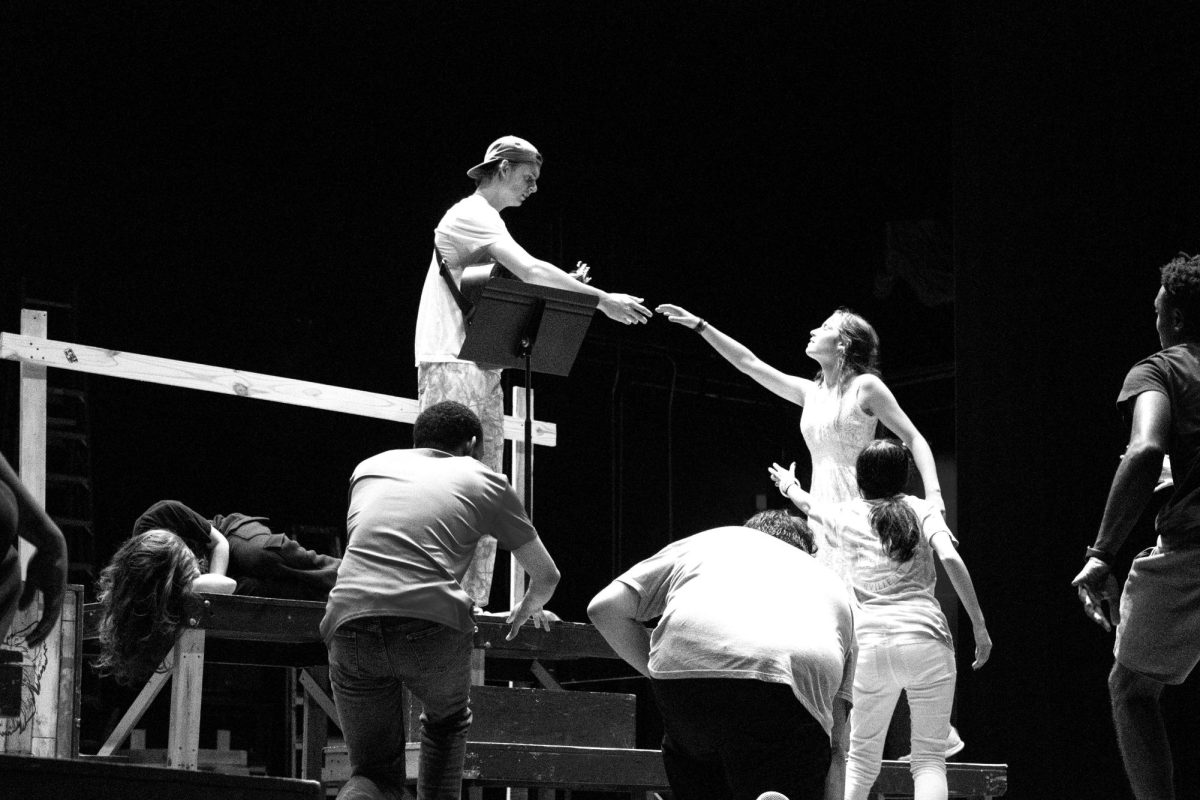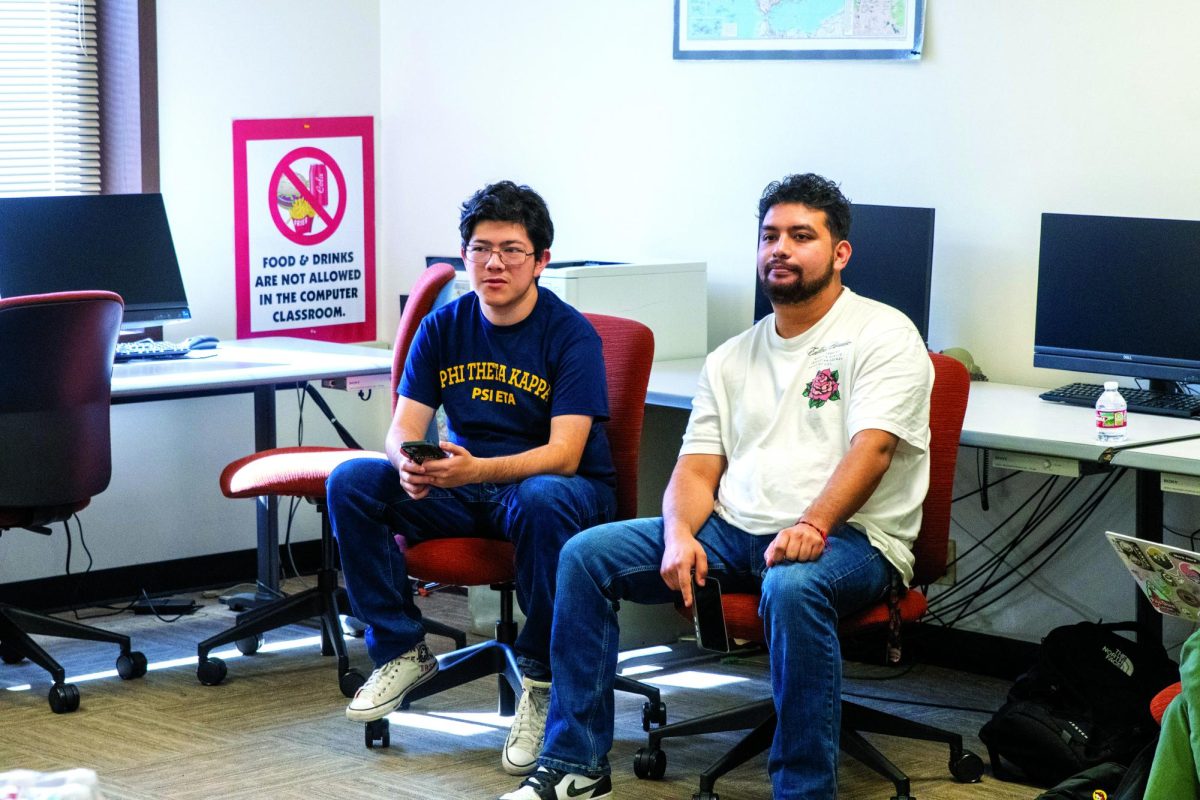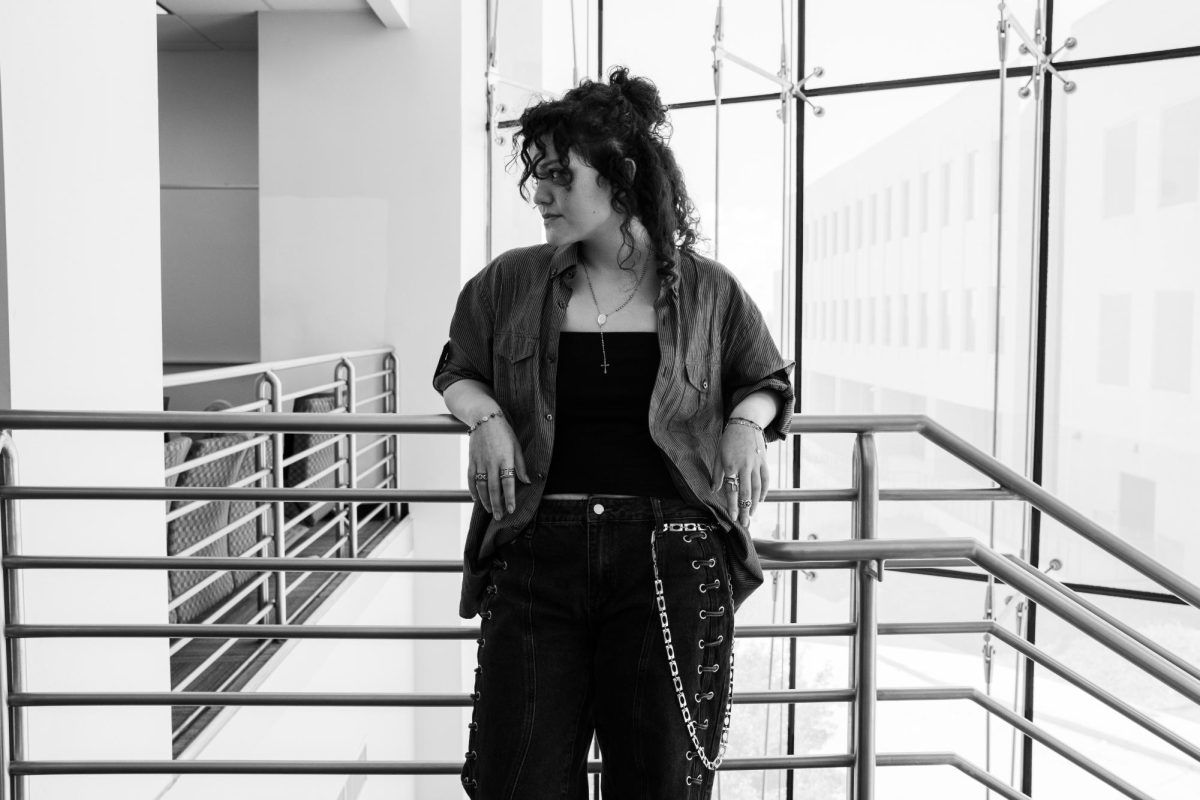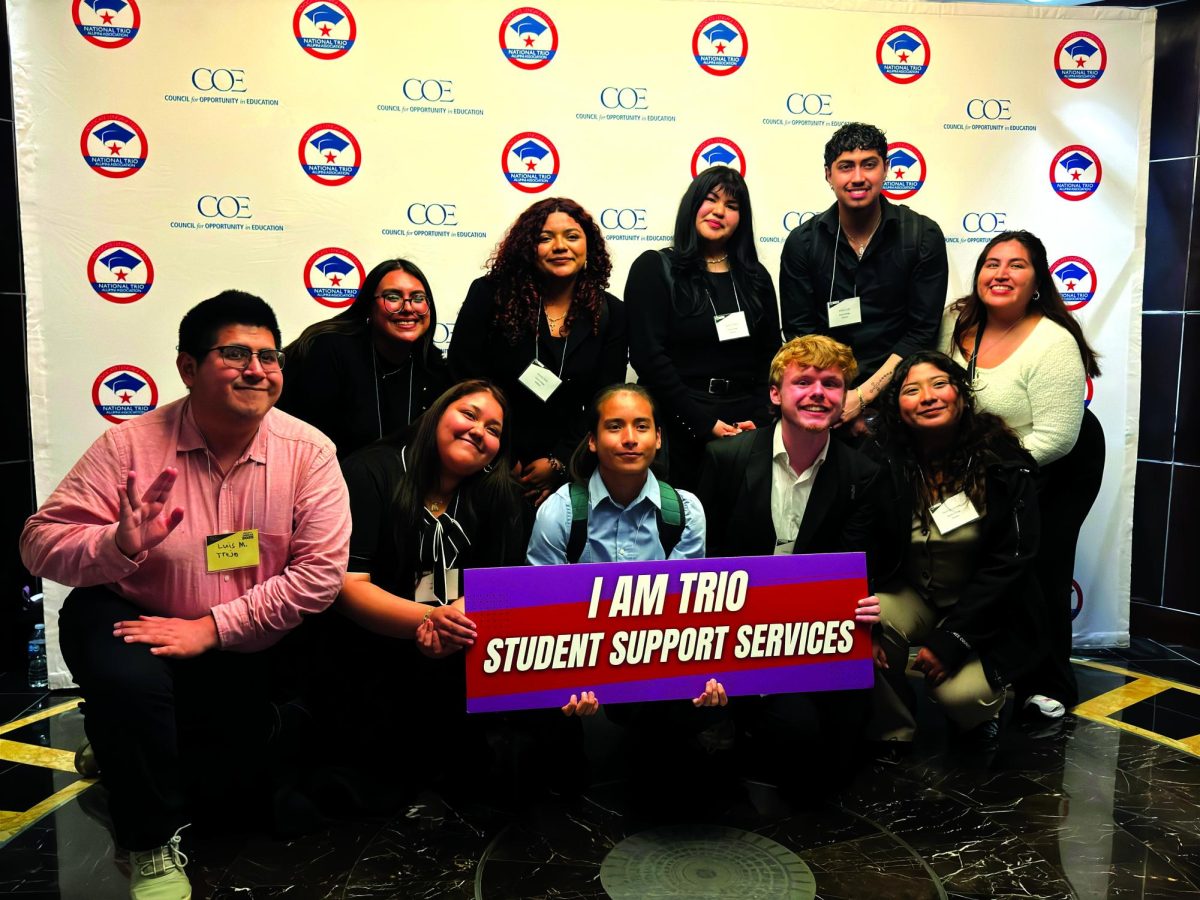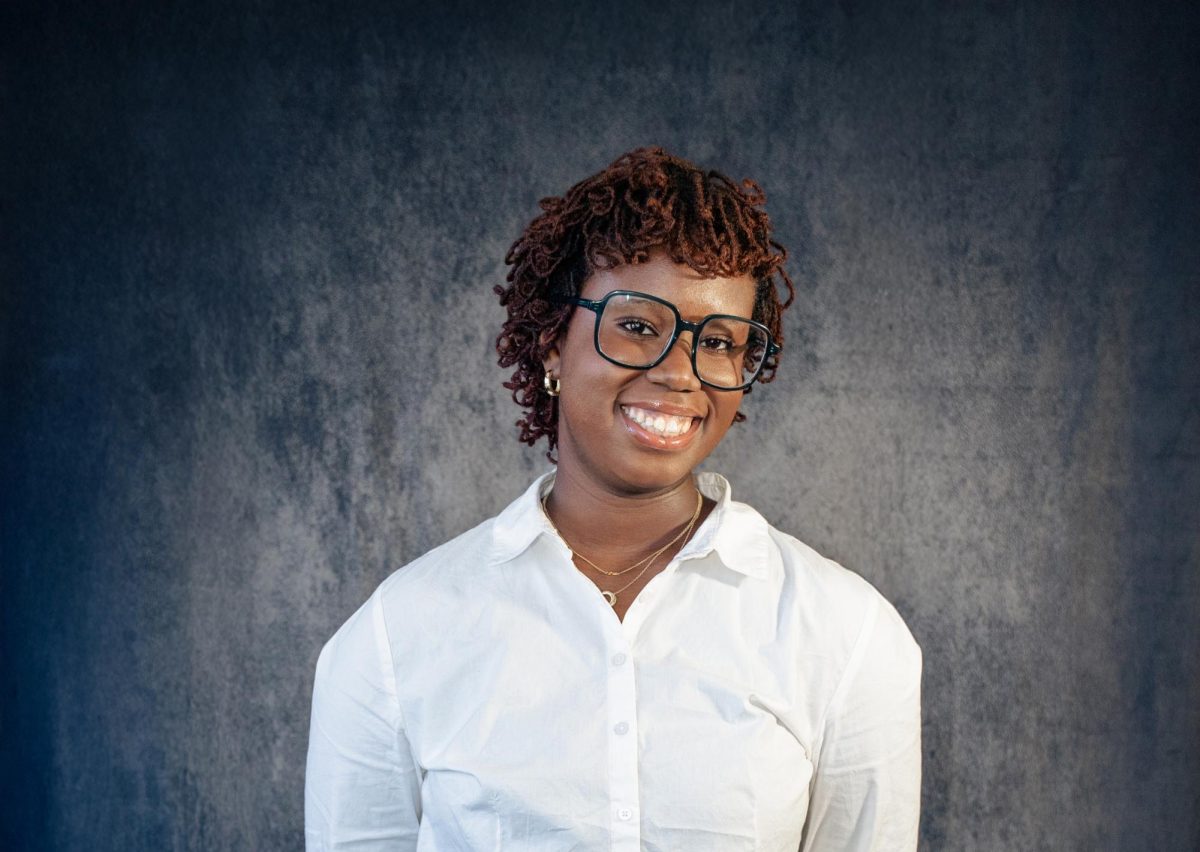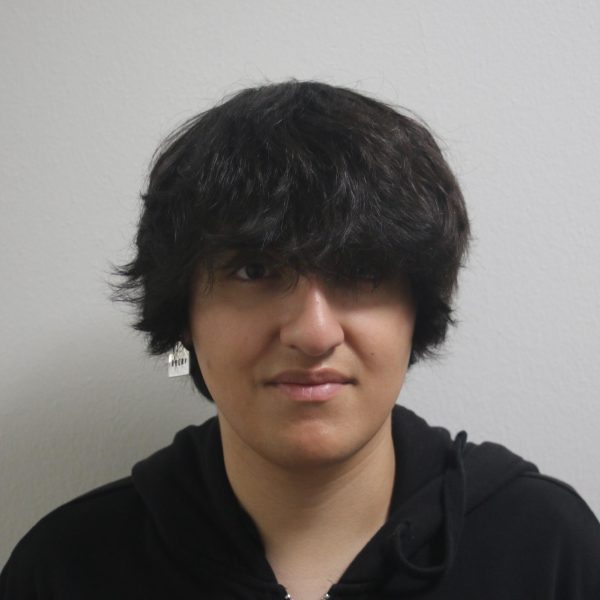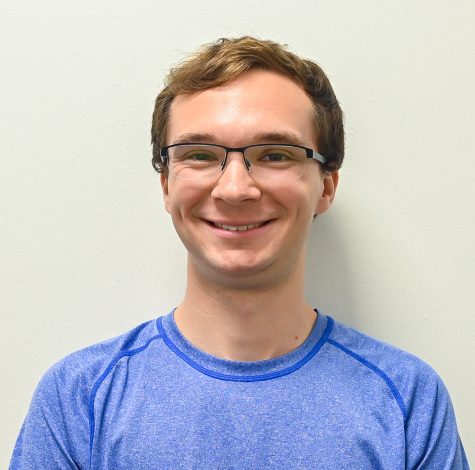Eastfield employees and the community gathered today in front of the Performance Hall to observe the annular solar eclipse, which featured up to 86% coverage at its peak. Spectators froze in awe as the moon cast over the sun.
“I like the way that an [eclipse] unifies times and cultures,” English instructor Andrew Tolle said.
A viewing party was presented by Eastfield’s Science Club, which starting setting up at 9 a.m, almost three hours from the 11:52 P.M. peak. The event itself proved a magnet for community members—with more strangers than students.
For many, the event was the perfect time for a picnic as well. The weather and welcoming atmosphere attracted several families.
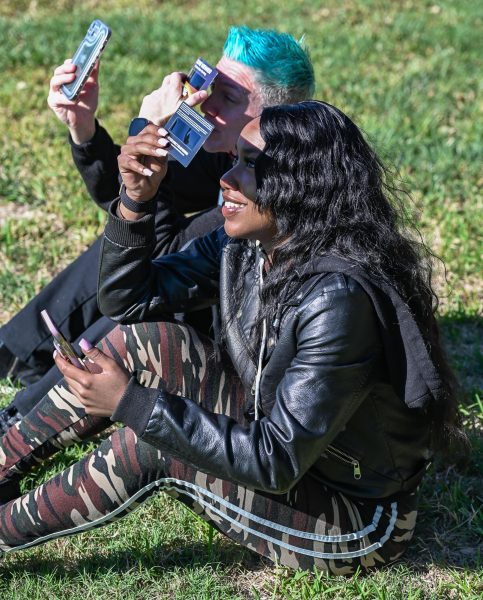
“We have drinks and weather and people chatting with each other and just sharing the experience,” biology instructor Rik Post said.
All eyes weren’t on the sky, though. Spectators walked around to see the shadows distort from the annularity.
At one point, a small crowd gathered to cast their shadows over a sidewalk, excitedly noting how the eclipse formed crescent-shaped shadows.
Post took the pleasure of gathering spectators for a brief science lesson on how shadows respond to eclipses.
“We have the chance to do something that is informative, educational and fun at the same time,” Post said.
Post estimates seeing over 10 eclipses in his lifetime, including five total. He chalked up his innumerable experiences to being at the right place at the right time—his affinity for international travel helped his odds of seeing an eclipse in countries such as Egypt and South Africa.
“I was in India many years ago when I saw a total solar eclipse. … About 400,000 people marched into the sea to do ritual purification,” he said.
One warning is always issued prior to an eclipse: don’t look at the sun. The Science Club even provided viewing glasses for the occasion, but associate of science major Edwin Iracheta couldn’t contain his excitement.
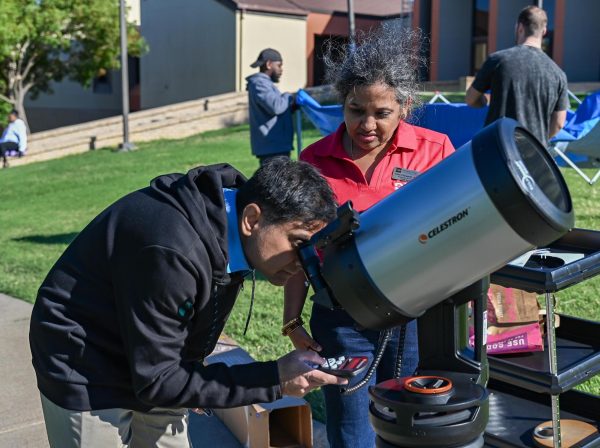
“It was painful – it just gives you a headache,” Iracheta said.
The ensuing headache helped him learn his lesson, but it didn’t sour the experience.
Even though Post is a seasoned eclipse viewer, he’s gone against the grain due to the novelty; he was in Iracheta’s shoes during a trip to Calcutta many moons ago.
“I was a young guy at the time. … I had this overexposed X-Ray film; we held it against a pinhole to get the image on the ground because it was safer,” he said. “But you know, if you briefly held it up you could see everything, so I took a chance.”
Science Club members like Edwin and his peers made sure to hand glasses to spectators, all the while raising funds for future community events.
For students like science club member Alejandra Torres and even her mother, Elizabeth, it’s the sense of community that makes these events more spectacular than the show itself.
“I love seeing her in her element, making friends and having a good time.” Elizabeth Torres said.
The last time an eclipse passed over Eastfield was in 2017, which Tolle recalled distinguishing the crescent shadows with then-president Jean Conway, an experience he carried over to the current eclipse.
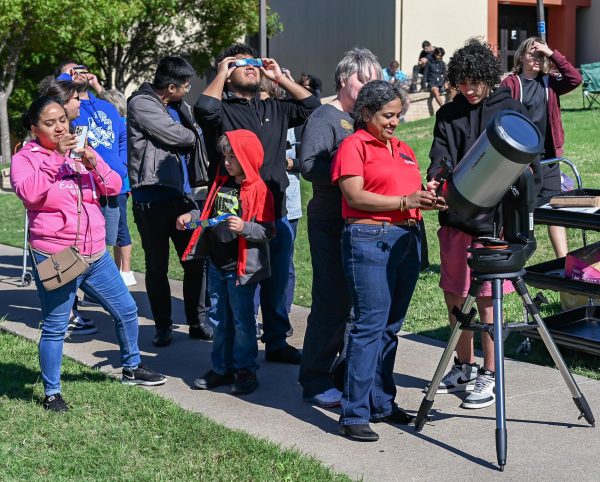
“If a comet comes through, it may be the last chance of your lifetime to see it,” Tolle said.
When the moon shifted away from its annularity, the spectators shuffled over to their cars, but several expressed interest in the upcoming total solar eclipse on April 28, 2024.
After the once-in-a-lifetime total eclipse, another isn’t expected to pass over Texas until 2617.
“Definitely a good wait,” Post chuckled. “This is something you don’t really think about, and it’s important that you get the most out of this experience.”


